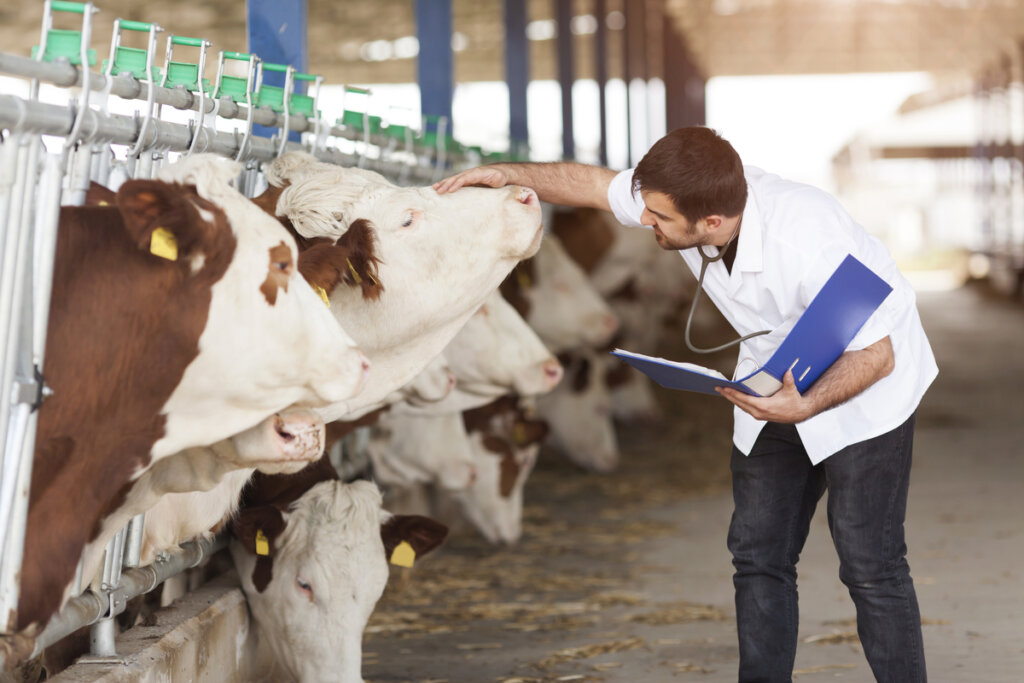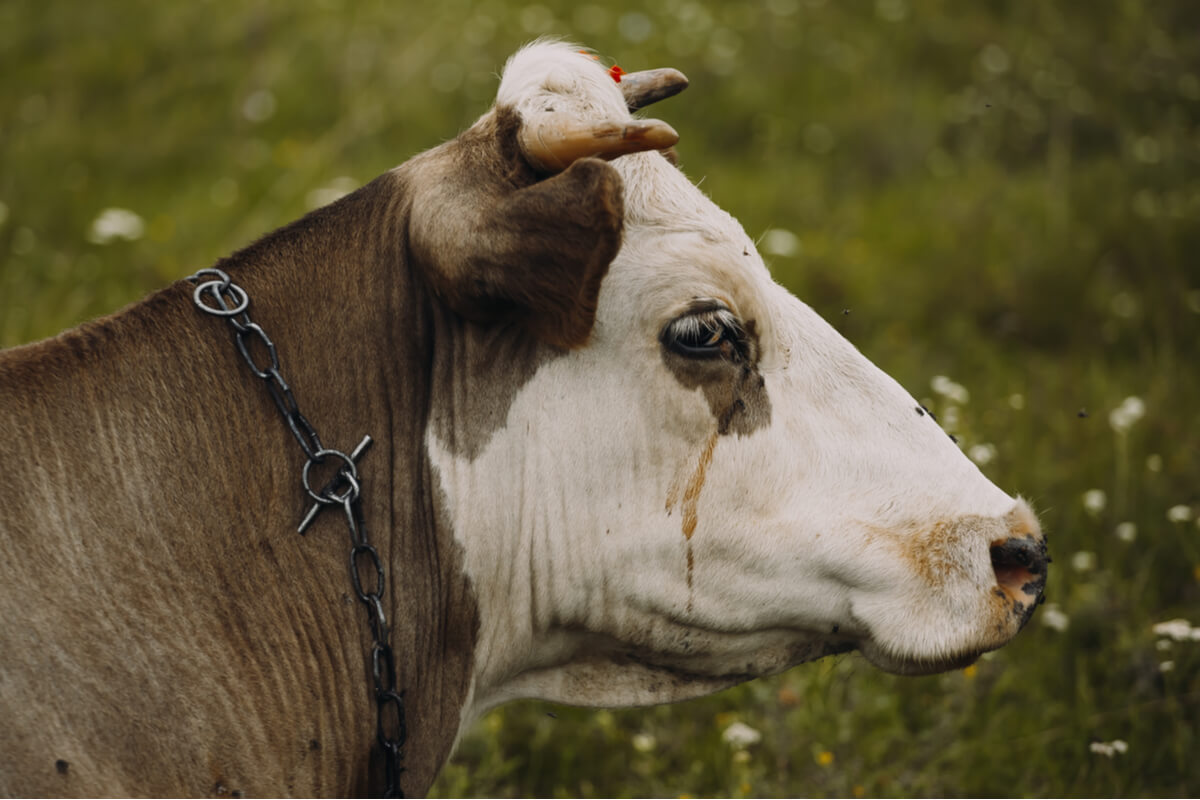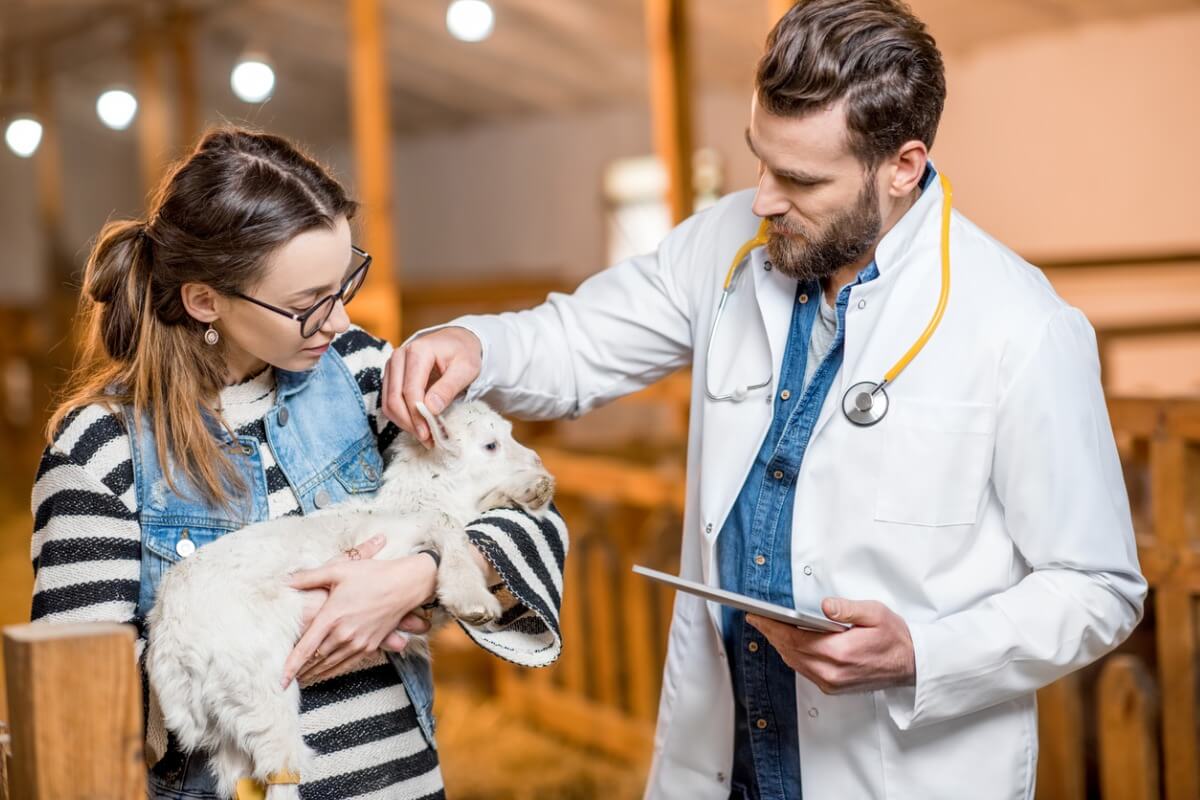Bovine Tuberculosis: Symptoms and Treatment

Bovine tuberculosis is a chronic disease that develops slowly, and with pneumonia symptoms. Although cows are often singled out as hosts, the truth is that many other species can be affected, such as cats, horses, wild boar, and goats.
Since it’s a contagious disease that occur in different species, it’s vital to control it in places where several animals coexist, including humans. Here you can learn more about this infection, so don’t miss it.
What’s bovine tuberculosis?
Bovine tuberculosis is a chronic disease caused by the bacillus Mycobacterium Bovis. It’s named after the nodular lesions produced by this bacterium in the lungs and lymph nodes of the affected animal, which are known as “tubercles”.
It’s a notifiable disease according to the World Organisation for Animal Health (OIE).
The animal may have been in contact with the bacteria and generated antibodies after overcoming the primary infection. However, if the next infection occurs through a different route and the animal can’t cope with the bacillus, it will contract TB again.

Causes of the disease
This is a bacterial and zoonotic disease, i.e. it can be transmitted to humans and other animals. The most common routes of transmission are aerosols (airborne) and ingestion of animal products, such as cow’s milk.
Wild animals living near livestock farms can sometimes come into contact with the bacteria and act as vectors. In places where several species live together in the same area (such as sanctuaries or farms), they can also infect each other if they share water or come into contact with infected feces.
Symptoms of bovine tuberculosis
It’s quite normal for it to take at least a few months for the first symptoms to appear. The bacteria can remain latent and the animal asymptomatic for a long time, but, at some point, the affected animal usually worsens. The most common signs of bovine tuberculosis are as follows:
- Anorexia (loss of appetite)
- Weight loss
- Agalactia (the cow doesn’t produce milk)
- Fluctuating fever
- Dry cough
- Respiratory sounds
- Dyspnoea (difficulty breathing)
- Rib pain
- Diarrhea
- Weakness
- Enlarged lymph nodes
- Tachypnea (rapid breathing)
- Caseous necrosis of the tuberculous lesions, with a pasty, yellowish consistency.
If you detect any of these signs on your farm, see your veterinarian immediately. Early action can make the difference between the life and death of an entire herd.
Stages of the disease
There are two stages of the disease: primary and post-primary. We show them separately in the following lines.
Primary stage
This stage runs from the time the animal comes into contact with the bacteria until 1-2 weeks after infection. In this stage, the pathogen reaches the lungs or lymph nodes, attracting macrophages and T-lymphocytes. It’s this accumulation of bacteria and dead white blood cells that forms the tuberculous granuloma.
Although the animal could be cured at this point, this is rarely the case. In the event that the tuberculous lesions calcify, then the disease is stabilized, as the bacteria are encapsulated within. However, the most common occurrence is that it spreads throughout the blood and causes the appearance of more tubercles.
Post-primary stage
This stage is typical of cases in which there is specific immunity, a reinfection, or the bacterium has spread through the body. In this stage, the bacillus travels throughout the body via the lymphatic route, usually by rupture of one of the affected nodules.
Diagnosis of bovine tuberculosis
Diagnosis of bovine tuberculosis requires a complete laboratory setup, as the symptoms are common to many other respiratory and infectious diseases. The following tests are performed:
- Tuberculinization: This allows direct detection of the disease. It’s the main test that’s usually performed and is based on the use of tuberculin, a protein extract obtained from the bacterium in question.
- Ziehl-Neelsen staining: This is a type of sample staining that allows the tuberculosis bacteria to be seen under the microscope. However, the disease can’t be ruled out if they aren’t visible.
- Bacterial culture: Because it’s a slow process, it isn’t useful as a primary test, but it’s good as a confirmatory method.
- Indirect Elisa test and post-uberculinization. Simply put, these are automated high-throughput serological tests.
- Interferon gamma test (INF-y). This is a blood test that allows the detection of tuberculosis. It measures the degree of reaction of the animal’s immune system to the bacteria that cause the disease.
Treatment of bovine tuberculosis
Since it’s a notifiable disease and is prevalent on farms, the campaign for its eradication consists of the slaughter of affected cows (or other infected animals). There’s currently no vaccine or effective treatment.
A screening programme is also carried out on these farms and zoos to prevent contaminated meat and milk from reaching the consumer.

Both sanctuaries and animal organizations are highlighting the need to find treatment for this disease. The rescued animals are subjected to the same laws as those considered as livestock. Because of this, it has often been necessary to fight for animals that have beaten the disease and to prevent them from being sent to the slaughterhouse.
All cited sources were thoroughly reviewed by our team to ensure their quality, reliability, currency, and validity. The bibliography of this article was considered reliable and of academic or scientific accuracy.
- KANTOR, D., ISABEL, N., TORRES, P. M., MORCILLO, N., IMAZ, M. S., & SEQUEIRA, M. D. (2012). LA TUBERCULOSIS ZOONÓTICA EN LA ARGENTINA. MEDICINA (Buenos Aires), 72(6).
- The Open Sanctuary Project, Inc. (2021, 10 noviembre). An Introduction To Other Farmed Animal Species. The Open Sanctuary Project. Recuperado 18 de noviembre de 2021, de https://opensanctuary.org/article/an-introduction-to-other-farmed-animal-species/
- Botello-Rodríguez, A. (2013). Título: Eliminación de la tuberculosis bovina y su efecto en la producción de leche y carne. Title: Elimination of bovine tuberculosis and its effect on milk and meat production. Revista Granma Ciencia. Vol, 17(3).